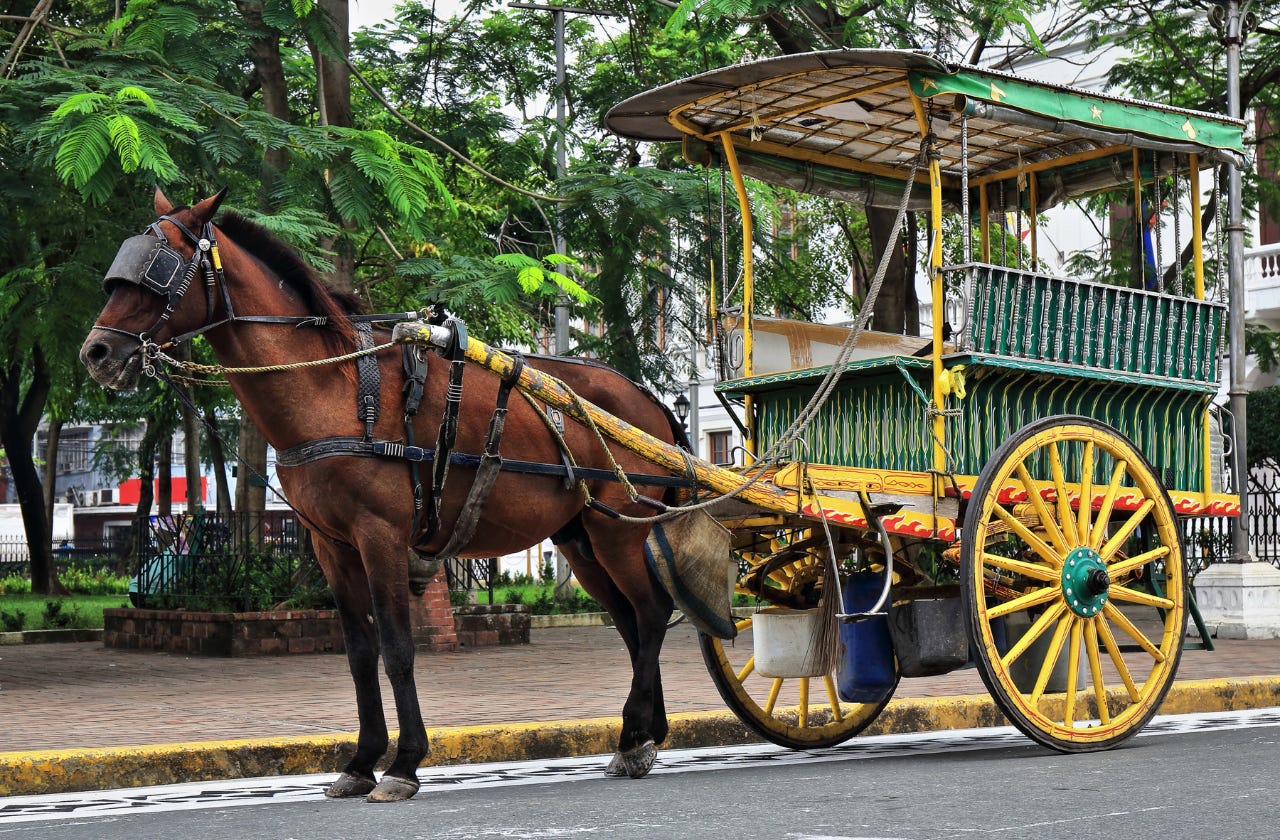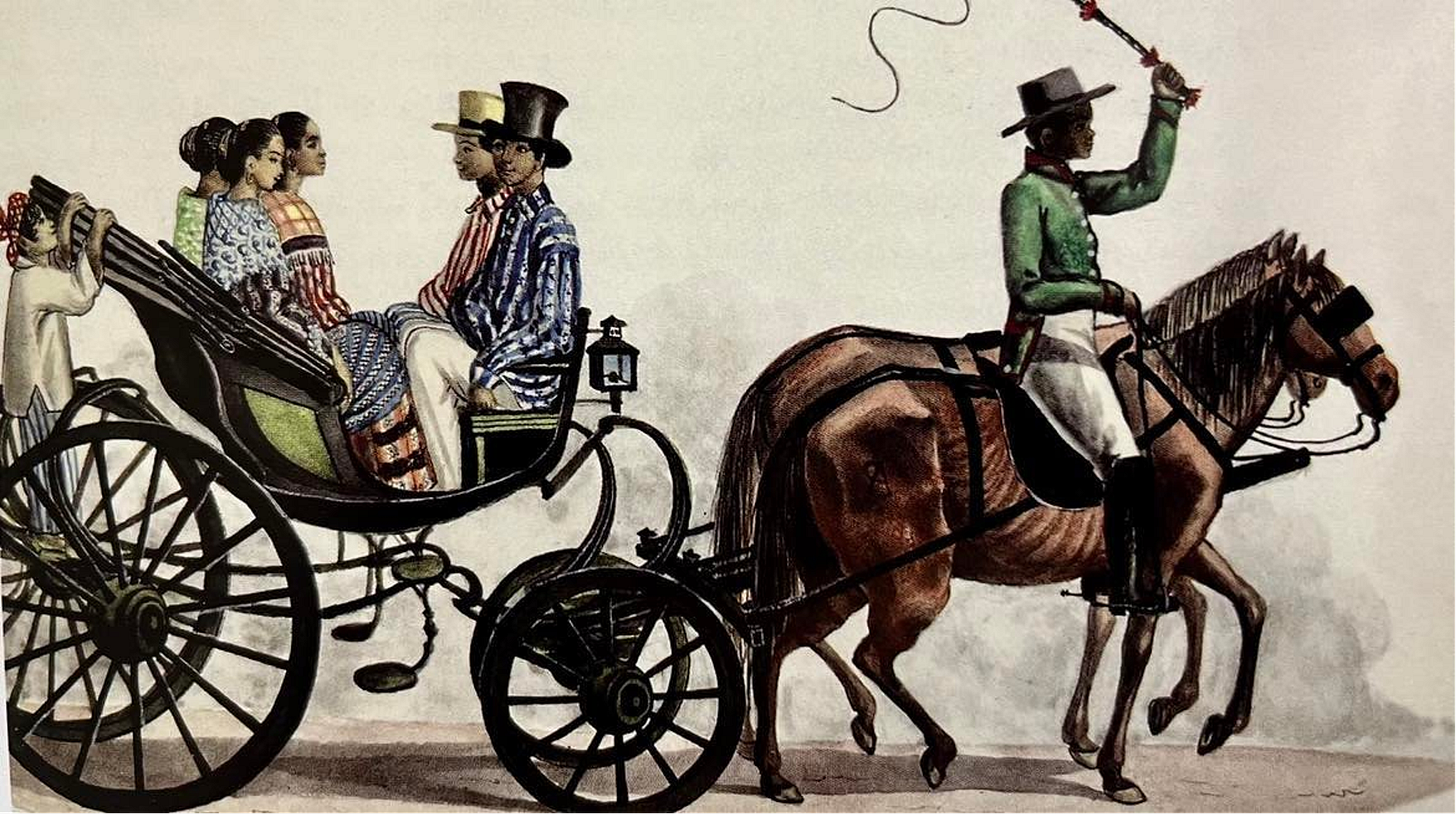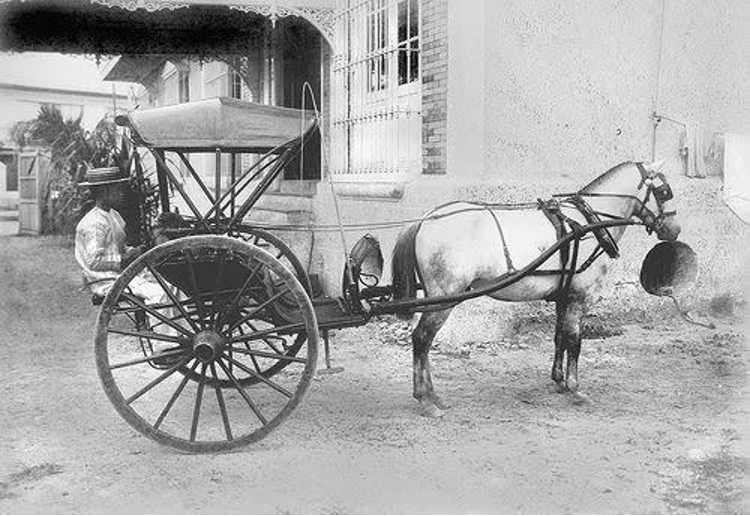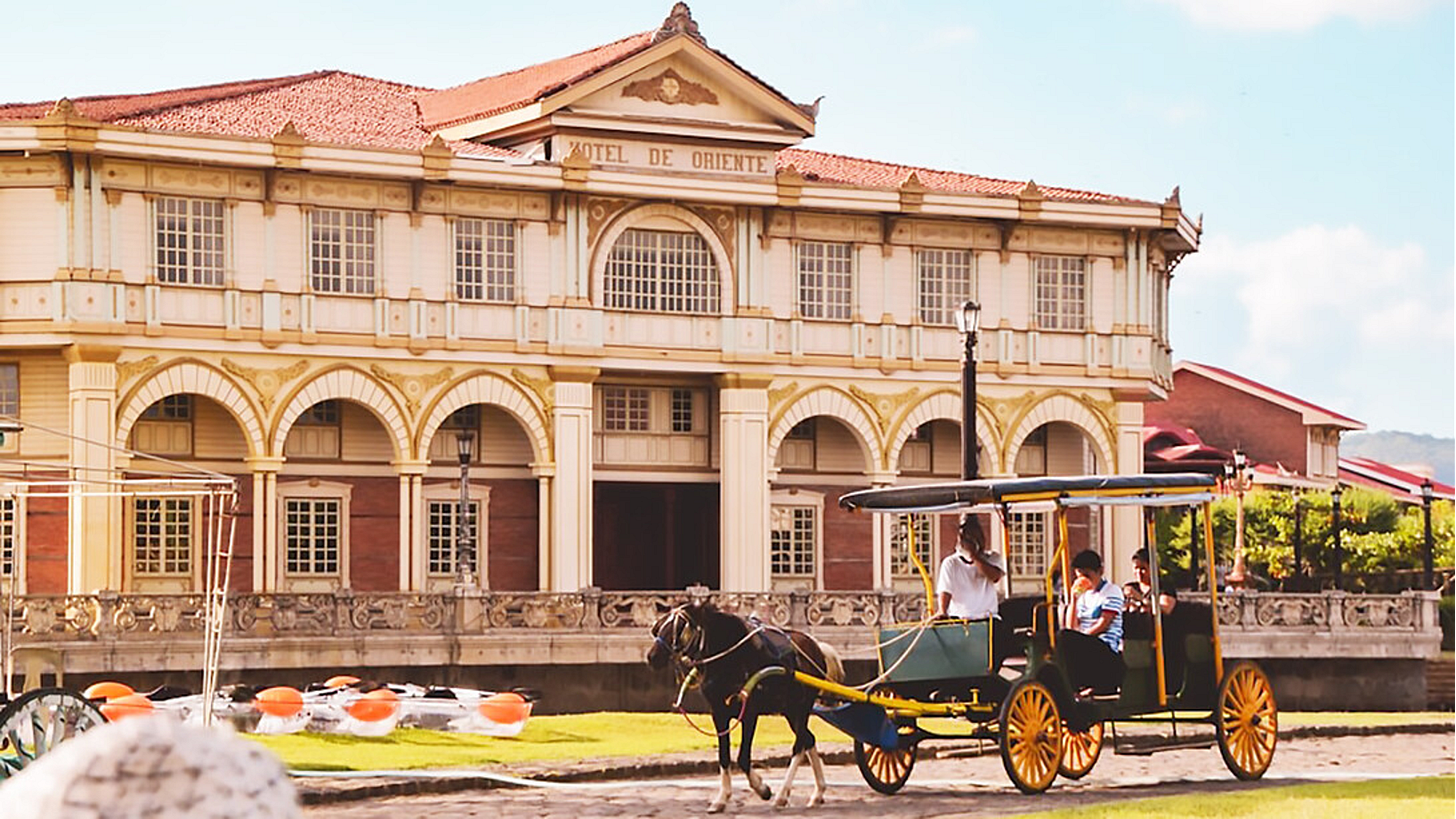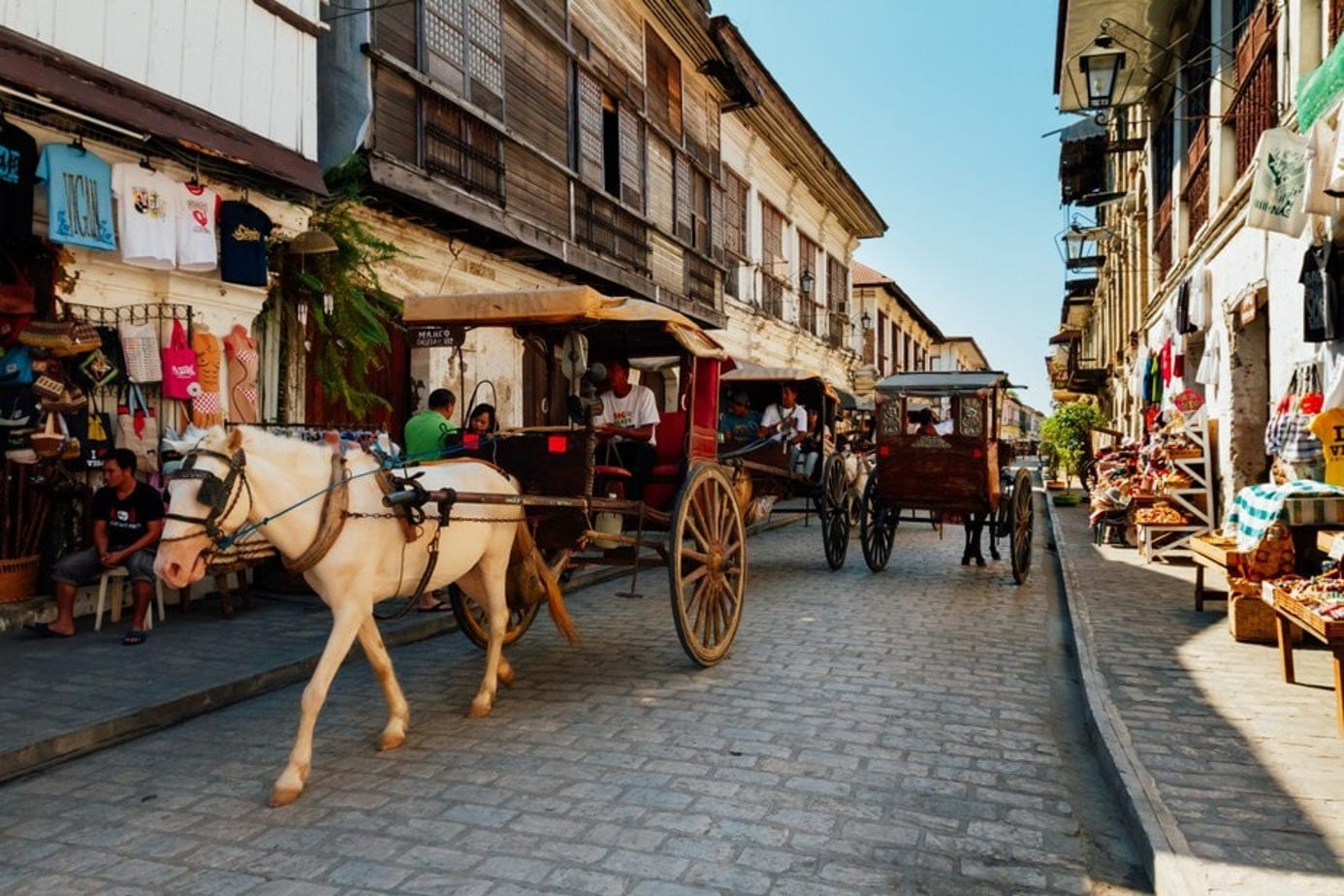The Filipino Kalesa
A closer look at the evolution of this iconic Filipino transport.
Going through Intramuros or Vigan, visitors might see horse drawn carts making their way through the older streets lined with Baroque-era churches and bahay-na bato.
If you grew up in the Philippines, you still saw these carts in major city streets up until the 2000s, or even the early 2010s. The kalesa is often cited as one of the hallmarks of Filipino transport culture, alongside the jeepney, the bangka, and the tricycle.
It’s seen as a huge part of urban Filipino culture, yet its presence, once so domineering and a status of upper society, has largely disappeared from the urban fabric. It exists in the context of historical neighborhoods, almost like it’s been typecast into a specific time period.
A Display of Wealth
While any tourist nowadays can hop on a kalesa tour in Intramuros or in Vigan for a decent price of about PhP 1,000-per-hour, the kalesa was a marker of the upper class in society.
Since the 1700s, kalesas were the mode of transport for those in the major cities, provided they could afford them. These two wheel carts, holding two (karomata), or up to six (karitela) passengers are pulled by horse.
The karomata was typically referred to as a “commoner’s kalesa” as it provided the most bare bones in accommodation, while the larger karitela could transport more people and haul freight.
The carts for the kalesa were made in traditional workshops known as karoseria, while zacate were fodder for kalesa horses. The zacate industry boomed due to the demand for kalesa.
The Influence of Kutseros in the American Period
By the time of American colonial rule, the kutseros had their own strong union. This organization was so strong, they effectively blocked the rickshaw industry from gaining traction in the archipelago. It was also during this period that kalesas were known as a cheap source of public transport.
Even with the rise of other competing forms of public transportation such as auto-rickshaws and trams on the streets, the kalesa remained popular for its higher flexibility and cheap fares, but more importantly, the voting power of the kutseros who had considerable influence.
The voting power of the kutseros can be equivalent to the voting power of the lower classes, especially since many members of the lower classes relied on kalesa for transport of goods. Elections in the American period could easily be swayed by the kutsero vote.
A 1939 government proposal to abolish the kalesa to reduce traffic congestion led to a widespread uprising, leading to a ban of proposals. Despite this voting power, a few kalesa restrictions had already been taken into effect, such as the ban on the creation of new kalesa terminals and restrictions on where kalesas may enter.
The Loss of the Calesa Vote and Restrictions Following the Second World War
While the kalesa continued to be in regular use during the Japanese occupation and in the postwar independent years, the kalesa vote was already losing traction. Kalesas were restricted to side roads by the 1960s, with a few surviving into the 1980s.
The 1990s and 2000s saw further replacement of the kalesa, with other forms of transport such as tricycles and scooters taking over the streets. As a form of public transport, kalesas are found in a few areas such as Cebu and Cagayan.
Kalesa as an Icon of Heritage Tourism
The kalesa continues to thrive in historical and tourist spots in the Philippines, namely in heritage towns like Vigan, Taal, and the heritage districts of Intramuros and Binondo. The kalesa is perceived as a relic of a bygone era that’s more often than not associated with cobblestone streets and bahay na bato.
One of the main activities tourists partake in Vigan is to ride on a kalesa. Furthermore, the heritage resort in Bagac, Bataan that uses heritage homes utilizes the kalesa to fully re-create the 19th-century urban landscape.
Although the kalesa does not have the political and urban clout it once had, it still holds a significant part of the Filipino psyche. The colorful carriages had inspired the colorful exterior of the jeepneys. National Artist of the Philippines and lyricist Levi Celerio wrote the lyrics for a song titled “Kalesa”, which was created in collaboration with composer Ambrosio Del Rosario in honor of the vehicle.
The kalesa is also so ingrained in local history that the heritage city of Vigan holds the Kalesa Parade during the Binatbatan Festival of the Arts.
Conclusion
Today, the kalesa stands not as a relic of the past, but as a living emblem of Filipino heritage; its wheels turning softly through streets that once echoed with colonial grandeur and everyday life.
Though its role has shifted from an elite mode of transport to a cultural symbol and tourist attraction, it continues to connect generations to a shared history of ingenuity, resilience, and artistry.
Whether seen gliding through Vigan’s cobblestones or Intramuros’ walled lanes, the kalesa reminds us that progress need not erase tradition. That even as the Philippines modernizes, the rhythm of its past still finds a way to move forward.



